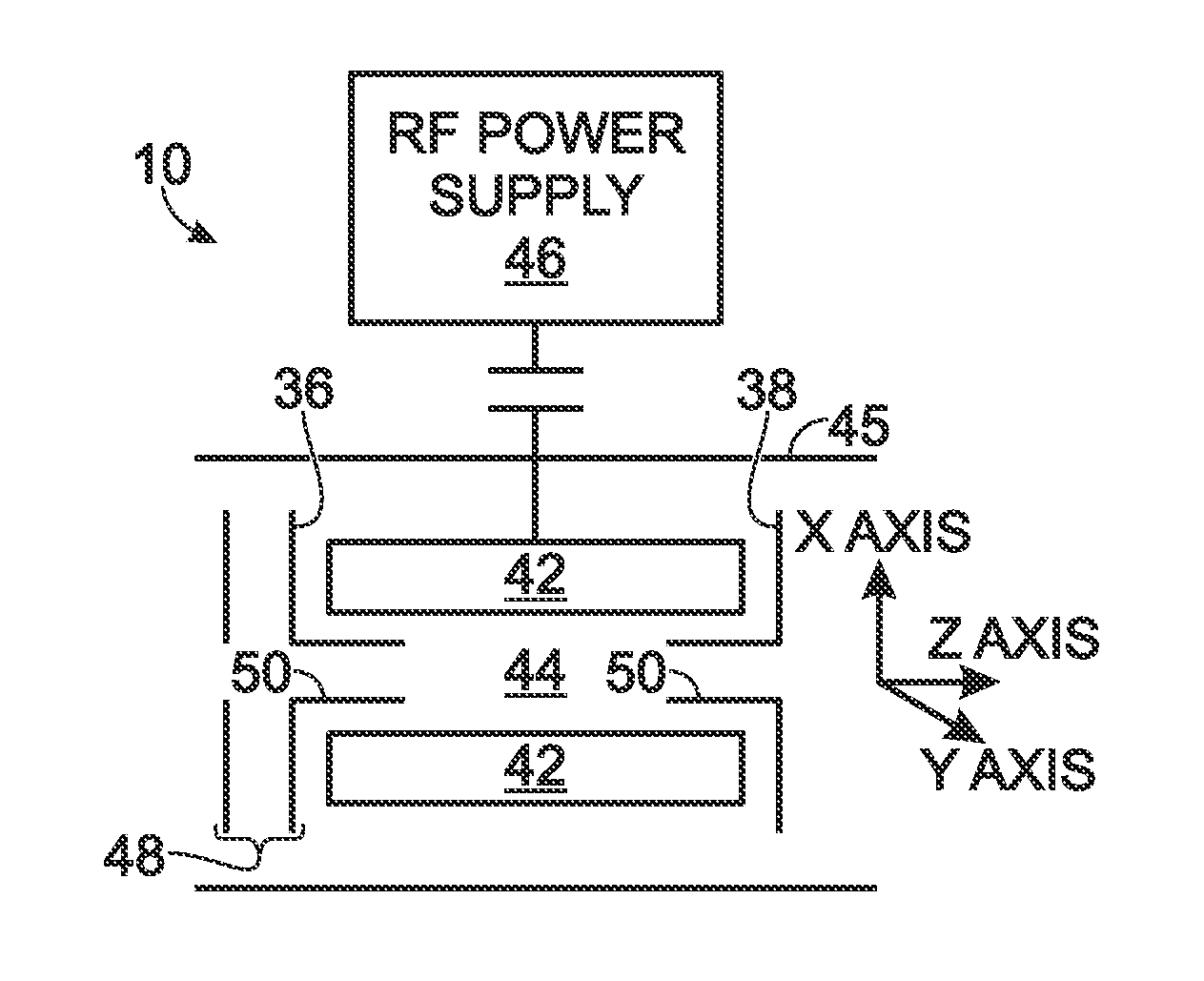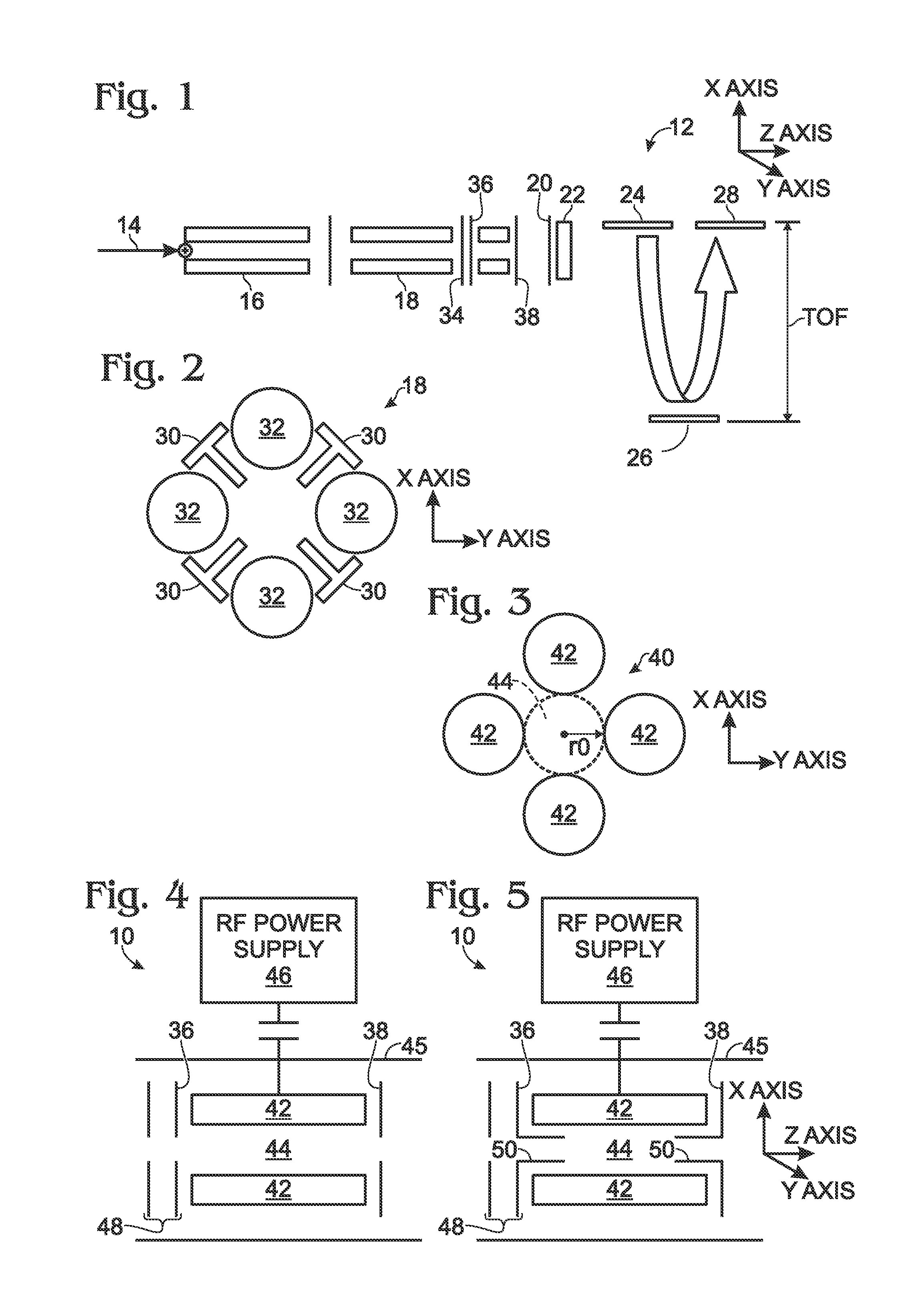Ion focusing and detection in a miniature linear ion trap for mass spectrometry
a linear ion and mass spectrometry technology, applied in mass spectrometers, separation processes, dispersed particle separation, etc., can solve the problems of limited ion ejection, the most expensive currently existing mass spectrometry technique, and the cost of single instrument typically over a million dollars
- Summary
- Abstract
- Description
- Claims
- Application Information
AI Technical Summary
Benefits of technology
Problems solved by technology
Method used
Image
Examples
Embodiment Construction
[0042]In one or more embodiments, the present invention provides a miniature linear ion trap (hereinafter referred to as “MLIT”) for use in mass analysis. As shown in FIG. 1, according to one embodiment of the present invention, the MLIT is used as an intermediate device 10 within a mass spectrometer system 12. Alternatively, the MLIT may be coupled to another mass spectrometer system or used as a standalone device.
[0043]Mass spectrometer system 12 may include an ion source 14, quadrupole 16, axial and radial ion focusing device 18, MLIT 10, grid 20, einzel 22, accelerator 24, mirror 26, and detector 28. For example, an extensively modified Qstar QqTOF (quadrupole, quadrupole, time-of-flight) mass spectrometer available from MDS Sciex may be used. The mass spectrometer system may be configured with other mass spectrometry devices as well.
[0044]Ion source 14 may be any source of ions generated from a sample. For convenience and other factors, the sample Angiotensin II (Asp-Arg-Val-Ty...
PUM
 Login to View More
Login to View More Abstract
Description
Claims
Application Information
 Login to View More
Login to View More - R&D
- Intellectual Property
- Life Sciences
- Materials
- Tech Scout
- Unparalleled Data Quality
- Higher Quality Content
- 60% Fewer Hallucinations
Browse by: Latest US Patents, China's latest patents, Technical Efficacy Thesaurus, Application Domain, Technology Topic, Popular Technical Reports.
© 2025 PatSnap. All rights reserved.Legal|Privacy policy|Modern Slavery Act Transparency Statement|Sitemap|About US| Contact US: help@patsnap.com



